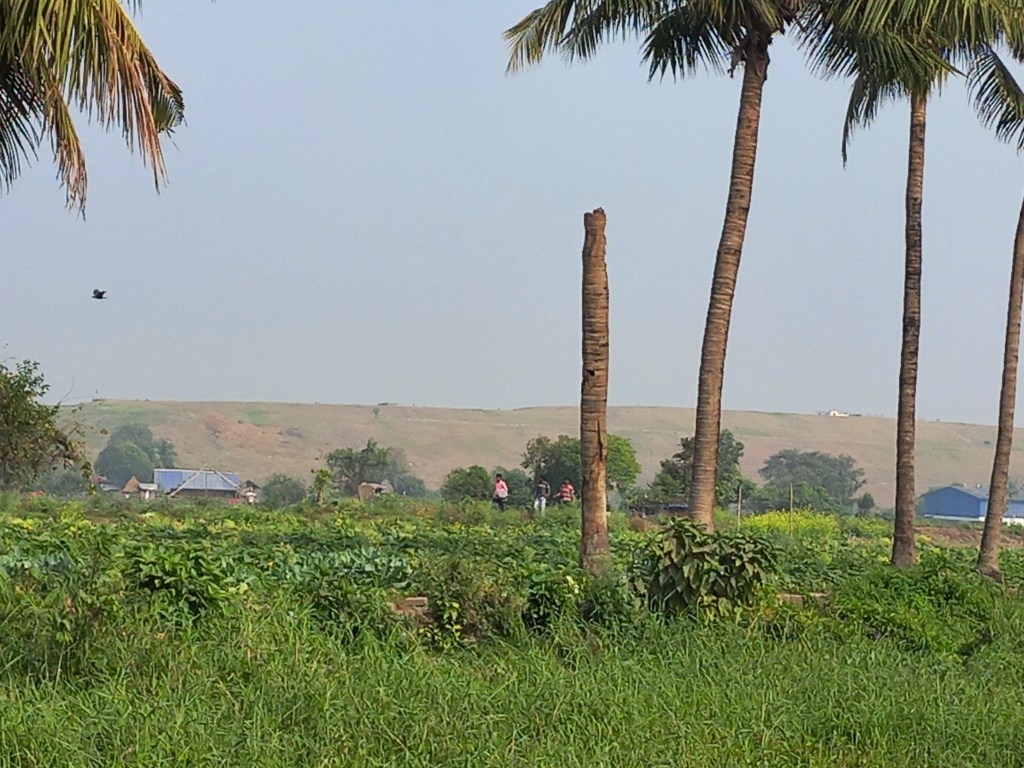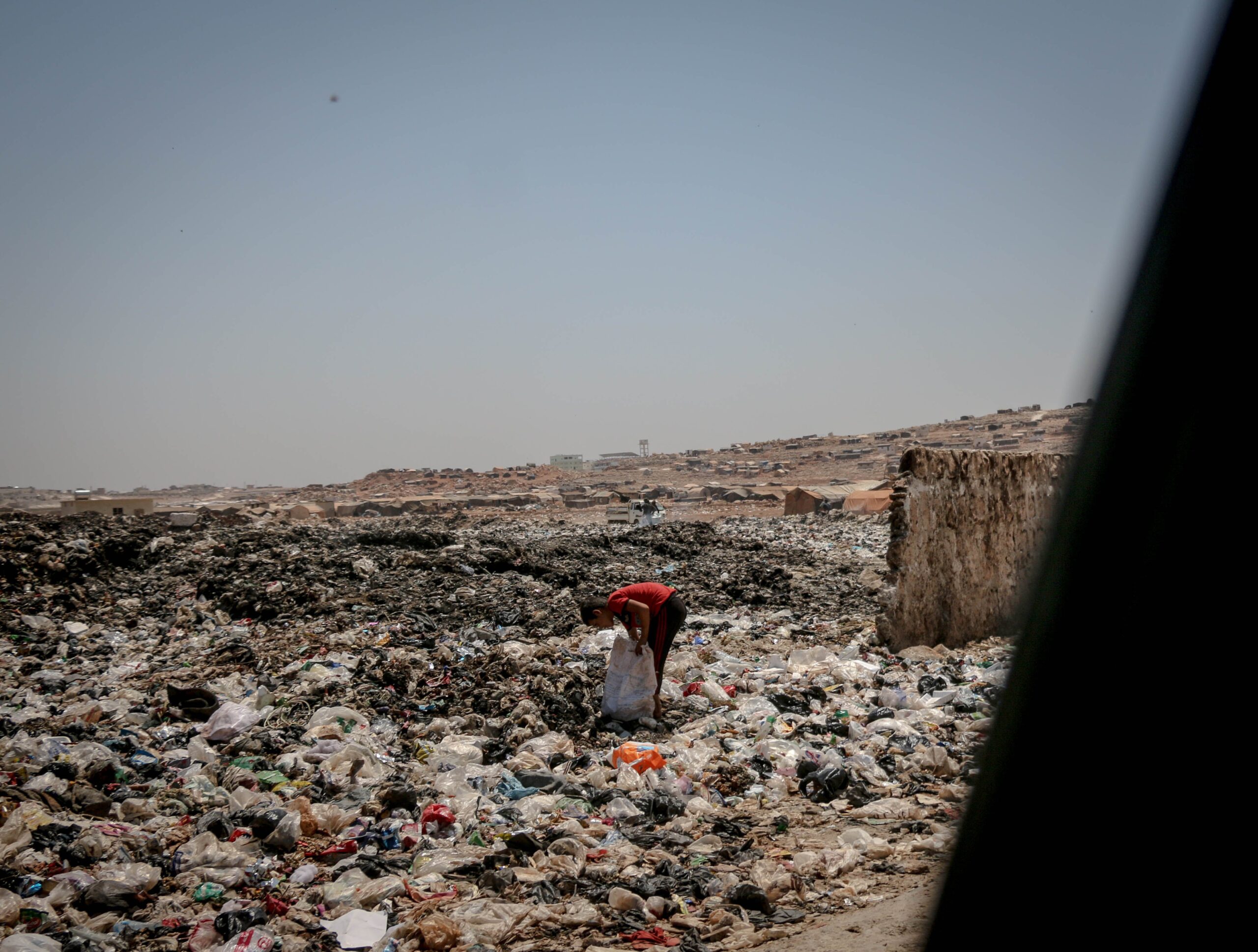According to the West Bengal Pollution Control Board, the concentration of particulate matter at the Dhapa site is more than four times higher than it should be.
“We are so used to getting throat and eye irritations that we have stopped caring. I just wash my eyes every few hours,” says Aneesh Molla, 50, a security guard at an upscale building complex near Dhapa, Kolkata’s main landfill since 1987. This area near the Eastern Metropolitan Bypass is now known for the constant spreading of smoke that chokes most of east Kolkata during winters. On an early January evening, when this correspondent arrived at the Silver Spring apartment in the area, there was a visible layer of smoke that caused immediate irritation.
The smoke problem has been a long one. People in the neighbouring areas have protested for years but nothing much has changed. In 2019, the residents of Silver Spring had put up a sign protesting the toxic fumes. Some people have sold homes they had bought in the area to shift away. Even people living kilometres away complain of sharply increasing pollution levels during winters. Like advertising professional Rima Sen uses a mask regularly and is now planning to invest in an air purifier living at least 4 km from Dhapa.
According to the West Bengal Pollution Control Board, the concentration of particulate matter at the Dhapa site is more than four times higher than it should be.
The problem of smoke from garbage heaps in the city is partly manmade and partly due to a combination of factors. The man-made part is because of unofficial waste segregation by burning by people who use waste for small-scale recycling. The other major reason is the methane that emanates from a huge heap of natural waste of this kind.
“Methane being highly combustible catches fire with even mild breezes. This burns all the combustible waste releasing a mix of dangerous fumes,” says Sunil Pandey, director of the waste management division at The Energy and Resources Institute(Teri). Winter is the worst season for this. While in summer there are strong winds and in winter there are rains, in winter this fire has no such deterring factors.
While the burning of other materials is already concerning, one of the most serious concerns about the fire in Dhapa is the sheer scale of plastic waste that still arrives at the site and is burnt. According to a 2023 study by Professor Sadhan Ghosh, a waste management expert from Jadavpur University, about 4,000 tonnes of waste is offloaded at Dhapa every day and of this 35 per cent is plastic, moreover about 70 per cent of this plastic is thin single-use polybag which is now banned.
These plastic fumes are so toxic that some experts have likened it to working in a silica mine. The burning of plastics releases toxic gases like dioxins and furans into the atmosphere.
And as pulmonologist Aloke Gopal Ghoshal explains even at a mild level, the impact of this on the human body is huge. “The simple thing one needs to remember about plastics is that they are almost indestructible. So whenever there are plastic fumes it carries a lot of particulate matter. This is what is dangerous for our lungs,” says Dr Ghoshal.
Unlike a sudden huge exposure to fumes like when a factory catches fire, a milder regular exposure to plastic fumes is less noticed but as or more dangerous. Ghoshal points out that during the winter months, he sees a sharp rise in lung diseases from people living in East Kolkata.
“Though we cannot say exactly which fumes caused these cases, plastic fumes have a strong correlation with a spike in cases of serious ailments like chronic obstructive pulmonary disorder (COPD), in some cases where plastic particles affect the airways in the lungs and it can lead to bronchiectasis where the airways of the lungs become widened making the lungs highly vulnerable to infection and these fumes are carcinogenic,” he says.
Given that a huge percentage of plastic waste at the Dhapa dumping site is single-use carry bags, just controlling that can be useful in curbing this problem. While the ban on plastic bags thinner than 120 microns is in effect from last year its implementation is quite abysmally low, says Ghosh.
When this correspondent visited different markets like Nagerbajar near Dumdum and Esplanade in central Kolkata, thin plastic bags were widely available. Even food delivered by a major e-commerce app like Swiggy and Zomato was wrapped in single-use plastic.
“For the small traders it is just a matter of effectiveness, we can’t stop them unless we stop manufacturing such plastic at source,” says Ghosh. While the state government listed over 60 such manufacturers last year, not much has happened since to stop them from producing such bags.
Ghosh adds that not all of this plastic waste reaches landfills like Dhapa where there is some formal effort for recycling. These plastic bags are thrown around in the city clogging drains and canals and are often burnt to clear waste only making it even more dangerous and difficult to regulate.

But even the ban is very limited in its nature, says Punarbasu Chaudhuri, assistant professor of environmental science at Calcutta University. “If we are looking at something like bubble wrap of delivery that too is plastic, sellotape again is a kind of plastic that cannot be recycled in any way. The giant FMCG companies that produce food and other consumables use a lot of plastic,” he says.
A 2021 audit by a civil society conglomerate, Break Free From Plastic found popular FMCG brands like Parle, ITC, Britannia, and Haldiram among India’s top plastic polluters. These too are single-use plastics and come as packets, wrappers, toothpaste tubes, cigarette butts and more.
“But there is no formal assessment of their contribution to the waste and hence no check. Only one kind of ban overlooks this larger picture. Why can’t there be a policy that a company that produces and uses so much plastic also needs to buy it back for recycling,” says Chaudhuri.
At Dhapa, efforts are being taken to mitigate the crisis. During winters, water is sprinkled on the waste in Dhapa to prevent fires, according to the Kolkata Municipal Corporation. Moreover, there is also an effort to clear the dumping ground. Since 2021 there has also been an ongoing government project to remove legacy waste at the site through biomining. The frequent smokes still coming out from the site however continue to choke east Kolkata.
The writer is Research Fellow at the Centre for Financial Accountability.
This article was originally published in East Mojo and can be read here.
Centre for Financial Accountability is now on Telegram and WhatsApp. Click here to join our Telegram channel and click here to join our WhatsApp channel and stay tuned to the latest updates and insights on the economy and finance.

